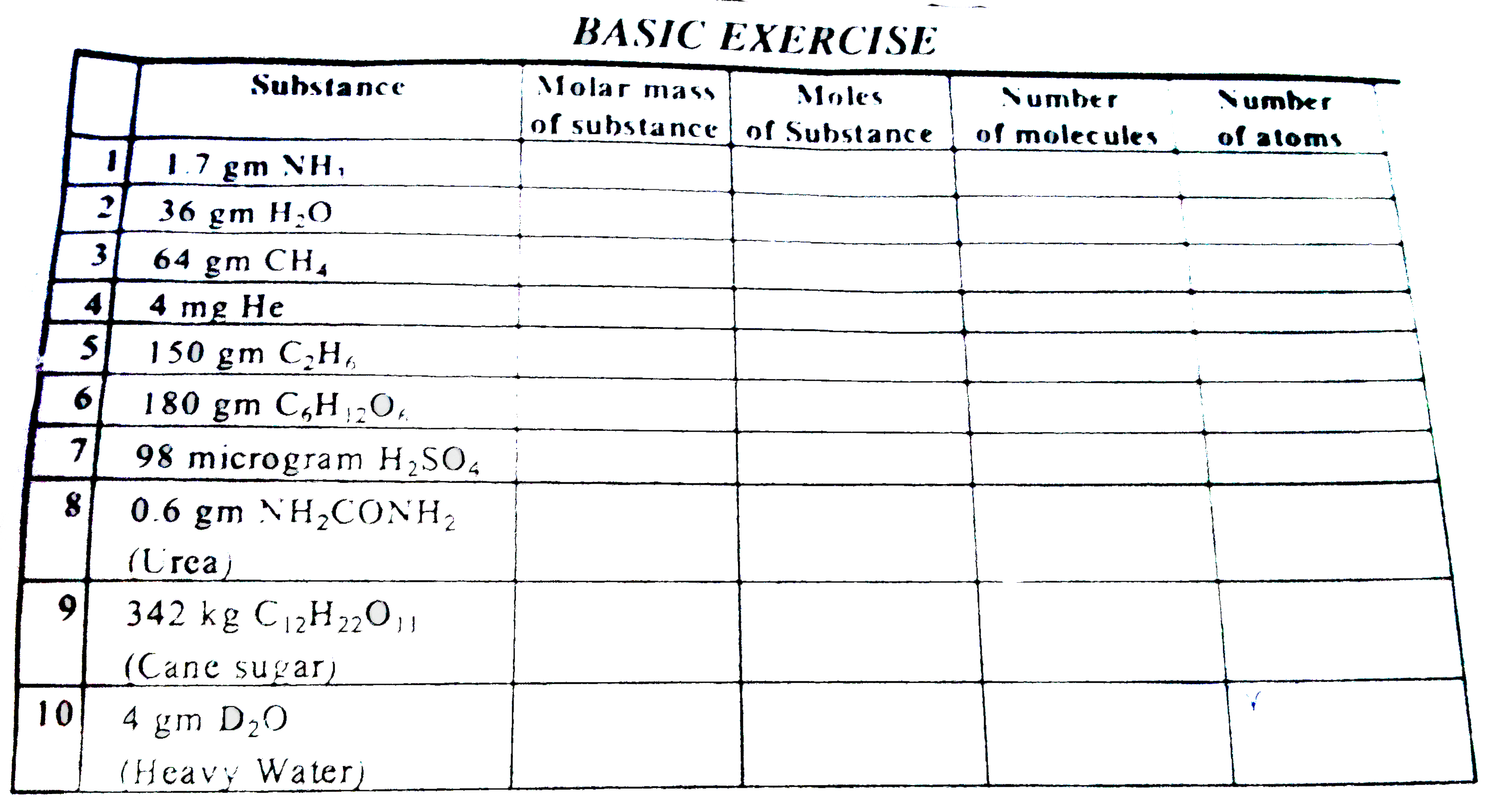41 g iron and 70 g carbon monoxide are allowed to react to produce iron carbonyl Find the excess reactant and how much mass of it will be left at the end of reaction :-
The correct Answer is:C
Topper's Solved these Questions
Similar Questions
5g H2 is allowed to react with 14 g N2 for the following reaction.
N2(g)+3H2(g)→2NH3(g)
What mass of H2 will be left unreached at the end of reaction?
View SolutionThe reaction 2C+O2→2CO is carried out by taking 24.0 g of carbon and 96.0 g of O2. Find out.
How many grams of the other reactant should be taken so that nothing is left at the end of the reaction ?
View Solution
Knowledge Check
when a mixture of aluminium powder and iron (III) oxide is ignited, it produces molten iron and aluminium oxide. In an experiment, 5.4gm of aluminium was mixed with 18.5 gm of iron oxide. At the end of the reaction, the mixture contained 11.2 gm of iron, 10.2 gm of aluminium oxide and an undetermined amount of unreacted iron (III) oxide. No aluminium was left. What is the mass of the iron (III) oxide left?
A2.5 gmB7.3gmC8.3gmD2.9gmA certain substane A . Is mixed with an equal amount of a substance, B . At the end of 1.0 hr, A is 70% reacted . How much will it be left unreacted at the end of 2.5 hr, reaction with respect to A of first order ?
A10%B5%C3%D1%Magnetite, Fe3O4, can be converted into metallic iron by heating with carbon monoxide as represented by this equation:
Fe3O4(s)+CO(g)→Fe(s)+CO2(g)
The kilograms of Fe3O4 which must be processed in this way to obtain 5.00kg of iron, if the process is 85% efficient is closest to? [M:=Fe=56]A6.92kgB8.12 kgC20.8 kgD24.4 kg
The reaction, 2C+O2→2CO is carried out by taking 24 g of carbon and 96 g O2, find out :
(a) Which reactant is left in excess ?
(b) How much of it is left ?
(c) How many mole of CO are formed ?
(d) How many g of other reactant should be taken so that nothing is left at the end of reaction ?
View Solution
2 moles carbon and 1.5 moles of oxygen gas are reacted in a container to produced CO and CO2 or both such that none of reactant is left. Find moles of CO, CO2 produced.
View Solution
2 moles carbon and 1.5 moles of oxygen gas are reacted in a container to produced CO and CO2 or both such that none of reactant is left. Find moles of CO, CO2 produced.
View SolutionLimiting reactant: Urea [(NH2)2CO] used as ferlilzer as animal feed, and in polymer industry, is prepared by the reaction between ammonia and carbon dioxide:
2NH3(g)+CO2(g)→(NH2)2CO(aq.)+H2O(1)
In one process , 637.2g of NH3 is allowed to react with 11.42g of CO2
(i) Which of the two reactants is the limiting reactant?
(ii) Calculate the mass of (NH2)2CO formed?
(iii) How much of the excess reagent (in grams) is left at the end of the reaction?
Strategy: (i) Since we cannot tell by inspection which of the two recantants is the limiting reacant, we have to procced by first converting their masses into number of moles. Take each reactnat in turn and ask how many moles of product (urea) would be obtained if each were completely consumed. The reactant that gives the smaller number of moles of producet is the limiting reactant.
(ii) Convert the moles of product obtained to grams of product.
(iii) From the moles of product, calculate to grams fo excess reactant needed int he reaction. Then subtract this qunitity from the grams of the reactant available to find the quanity of the excess reactant remaining.
View Solution1.0 g of Mg is burnt in a closed vessel which contains 0.5 g of O2.
(i) Which reactant is left in excess?
(ii) Find the weight of excess reactant.
(iii) How many millilitres of 0.5NH2SO4 will dissolve the residue in the vessel?
View Solution
